#Carl Borden
Explore tagged Tumblr posts
Text
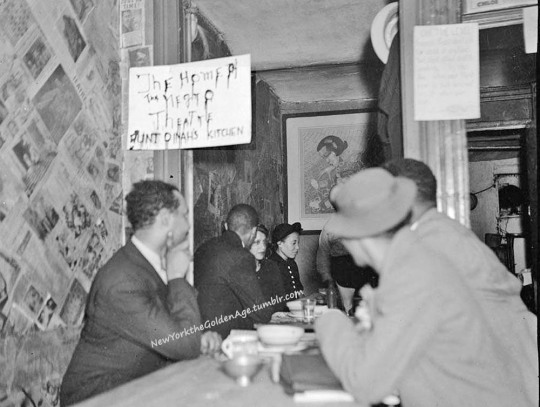
Taken by a WPA photographer between 1935 and 1941, this picture shows diners at Aunt Dinah's Kitchen in Harlem. Established by Richard Huey, an actor in the Harlem theater scene, it was located in the basement of 172 West 135th Street, next to the YMCA. As the sign indicates, it was the go-to dining spot for Harlem's theater folk in the 1930s and 1940s. It also hosted one-act plays and forums and supported actors who needed a free meal.
From 1933 until Huey's death in 1948, the restaurant's “down-home grub” drew such luminaries as Rose McClendon, Ethel Waters, Langston Hughes, Carl Van Vechten, Juano Hernandez, Richard B. Harrison, Olive Borden, Georgette Harvey, Countee Cullen, Claude McKay, Frederick O’Neal, Count Basie, and others to his “hangout for hams.”
The family-style dining room attracted both locals and theater stars. Inspired by his roots in Monroe, Louisiana, Huey lined the walls with newspaper as a tribute to the restaurant walls back home which used the papers "partly to keep the wind out and partly for decoration."
Photo: NYC Dep't of Records Facebook
#vintage New York#1930s#vintage Harlem#Aunt Dinah's Kitchen#Harlem restaurant#Richard Huey#hangout#Harlem hangout#vintage NYC#Harlem Renaissance#actors
50 notes
·
View notes
Text
Birthdays 11.9
Beer Birthdays
Peter Barbey (founder, Peter Barbey & Sons Brewery, Reading, Pennsylvania; 1825)
Jack Curtin
Five Favorite Birthdays
Gail Borden; dairyman, inventor (1801)
Hedy Lamarr; actor, inventor (1913)
Carl Sagan; scientist, writer (1934)
Anne Sexton; writer (1928)
Ed Wynn; actor (1886)
Famous Birthdays
Spiro T. Agnew; disgraced U.S. vice-president (1918)
Benjamin Banneker; mathematician, astronomer (1731)
Hermann Conring; German philosopher (1606)
Dorothy Dandridge; actor (1923)
Sandra "Pepa" Denton; pop singer (1964)
Edwin Drake; discovered oil in Pennsylvania (1819)
Marie Dressler; actor (1869)
David Duvel; golf player (1971)
Lou Ferrigno; actor, bodybuilder (1951)
Tom Fogerty; rock singer (1941)
Robert Frank; Swiss-American photographer (1924)
J. William Fulbright; politician, fellowship creator (1905)
Gigo Gabashvili; Georgian painter (1862)
Bob Gibson; St. Louis Cardinals P (1935)
Whitey Herzog; baseball player (1931)
Allama Muhammad Iqbal; Indian poet, philosopher (1877)
Velimir Khlebnikov; Russian poet and playwright (1885)
Nick Lachey; pop singer (1973)
Bohdan Lepky; Ukrainian author and poet (1872)
Elijah Lovejoy; abolitionist (1802)
Phil May; English singer-songwriter (1944)
Roger McGough; English author, poet, and playwright (1937)
Arthur Rudolph; German scientist and engineer (1906)
James Schuyler; poet and author 1923)
Giles Gilbert Scott, English architect, designed red telephone box (1880)
Sisqó; singer-songwriter and actor (1978)
Mikhail Tal; Latvian-Russian chess player (1936)
Heiti Talvik; Estonian poet (1904)
Susan Tedeschi; singer-songwriter (1970)
Lio Tipton; actor and model (1988)
Mary Travers; folk singer (1936)
Ivan Turgenev; Russian writer (1818)
Tom Weiskopf; golf player (1942)
Hermann Weyl; German mathematician, physicist, and philosopher (1885)
Stanford White; architect (1853)
1 note
·
View note
Text
Steamboat Willie (1928)
2024 had opened with the greatest rejoicing among fans of Disney and old school animation. After 95 years, the earliest version of Mickey Mouse is now in the public domain and is owned by the public. Immediately after midnight, YouTube account "Corridor" uploaded the iconic Disney short "Steamboat Willie" and as of this writing, the video has 376,000 views and is sure to go up. I thought I would celebrate by reviewing this 7 minute masterpiece which shows the inception of an American icon.

The cartoon opens with the famous shot of Mickey commanding a steamboat down the river, although without the permission of his boss, the giant Peg-Leg Pete (although without the Peg-Leg). Mickey is forced to do his chores while Pete's parrot taunts him. The steamboat picks up a bunch of animals including a cow and a goat. Minnie is also picked up and the two have fun playing music when the goat eats sheet music of "Turkey In The Straw" that Minnie brought aboard. The fun continues as Mickey and Minnie play the animals like musical instruments, using a duck quack, the cow's teats and a bull's set of teeth. Pete discovers the jam and orders Mickey to peel potatoes, again with the parrot taunting over him, but Mickey throws one of the potatoes to shut the parrot up, ending the cartoon.

"Steamboat Willie" is every bit the piece of film that is found in every montage celebrating the cinema of the 20th century. Mickey at the helm of the Steamboat is as iconic as Charles Foster Kane whispering "Rosebud" or Rick Blaine saying "Here's looking at you kid". And yet, the animation is primitive, the music by future Looney Tunes/Merrie Melodies composer Carl W. Stalling is generic and the dialogue is unintelligible. All of that can be excused due to the art of animation being in the developmental stages and that it was the first animated sound film. Taken for what it is, "Steamboat Willie" resonates with people of all ages just for the very idea that it was Mickey Mouse's debut to the world and that's what really matters. It's the same thing with "The Jazz Singer", despite being the first full length talkie, it is really a mediocre film, and had it not been for the history, no one would care for it. If anything, the flaws are actually the most fascinating part.

Back in 1928, "Steamboat Willie" was the warmup feature for a now lost film called "Gang War" starring Jack Pickford (brother of Mary) and Olive Borden. The audience were blown away by Mickey Mouse, for the sheer brilliance of the cartoon as if it was other worldly. Also, the fact that "Gang War" was another early talkie that most likely was devoid of a musical score and the dialogue tended to be bland and inaudible. The film was panned by critics calling it another cliche flick. The critics had all the kind words for the cartoon preceding the feature which was more revolutionary. The audience demanded "Steamboat Willie" be repeated and the rest is history. I wonder if a copy of "Gang War" will surface and if it will find a new audience who might be receptive due to its association with "Steamboat Willie". Maybe, maybe not.
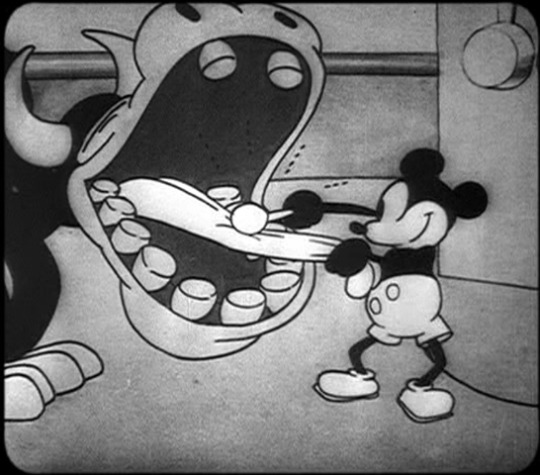
What will come from this new public domain status for early Mickey Mouse? Much like the plays of Shakespeare or the art of Leonardo Da Vinci, there is an audience willing to put their interpretation of the classic character in their own art, literature or parody. 2024 and beyond should and will be filled with endless possibilities.
9/10
#dannyreviews#steamboat willie#walt disney#mickey mouse#public domain#carl stalling#minnie mouse#turkey in the straw#peg leg pete#happy new year#2024
5 notes
·
View notes
Text
Ingefærte (4255 words) by nerakrose Fandom: Afdeling Q | Department Q (Movies) Rating: Explicit Warnings: No Archive Warnings Apply Relationships: Assad/Carl Mørck Additional Tags: Journal 64, Break up sex, Blow Jobs, Anal Sex, Anal Fingering, More Blow Jobs, Established Relationship, Relationship Problems, Getting Back Together, (teknisk set slog de ikke op men de fandt sammen igen alligevel hvis det giver mening), Serious Injuries, (hvis du har set filmen you know), Sobbing, Declarations Of Love, Happy Ending, foregår under og efter filmen Series: Part 4 of afdeling q men det handler om mad i stedet for mord Summary:
Sidst på dagen er kantinen altid næsten tom, så der er ro, ingen kat og ingen Rose, og bordene er så smalle at deres knæ rører hinanden.
#afdeling q#department q#journal 64#sidste del af kvartetten færdig#assadxcarl#my fic#dansk fic#danish fic#dansk#hvis du har fulgt med ved du at jeg er fuldstændig feral over den her film#så nu har jeg taget det sidste skridt og givet carl og assad deres lykkelige afslutning#mere eller mindre#der er hvertfald en hel mere kys end der var i filmen#for ikke at tale om andre ting
1 note
·
View note
Video
(via https://www.youtube.com/watch?v=gkwZJxt7xmk)
1 note
·
View note
Photo

“Carl: Mind if I join you? Ty: On many levels and with great intensity.“
8 notes
·
View notes
Text
Buffalo Bill 1944
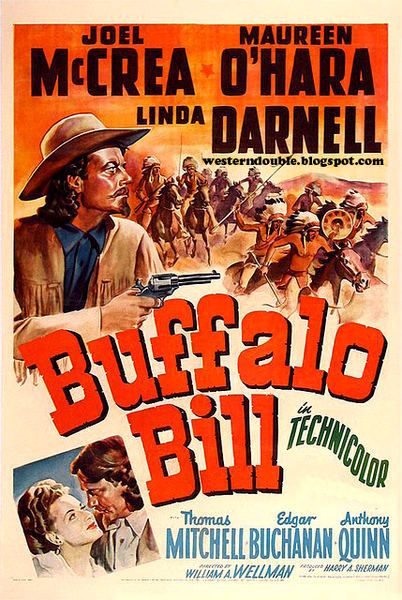
#buffalo bill#joel mccrea#maureen o'hara#linda darnell#anthony quinn#edgar buchanan#thomas mitchell#moroni olsen#frank fenton#matt briggs#george lessey#frank orth#carl andre#arthur aylesworth#evelyn beresford#edward biby#sidney blackmer#billy bletcher#eddie borden#george bronson#ben corbett#frank cordell#lester dorr#fred graham#jack kenny#arthur loft#kermit maynard#syd saylor#charles soldani#harry strang
22 notes
·
View notes
Photo

Photoplay, January 1927
#olive borden#magazine: photoplay#year: 1927#decade: 1920s#type: illustrations#artist: carl van buskirk#ph vol. 31 no. 2
58 notes
·
View notes
Text
Seabiscuit (2003) Review
Based on the very true story of Seabiscuit a small undersized racehorse whose victories lifted not only the team around it but the nation due to the depression era everyone was currently living in. ⭐️⭐️⭐️ Continue reading
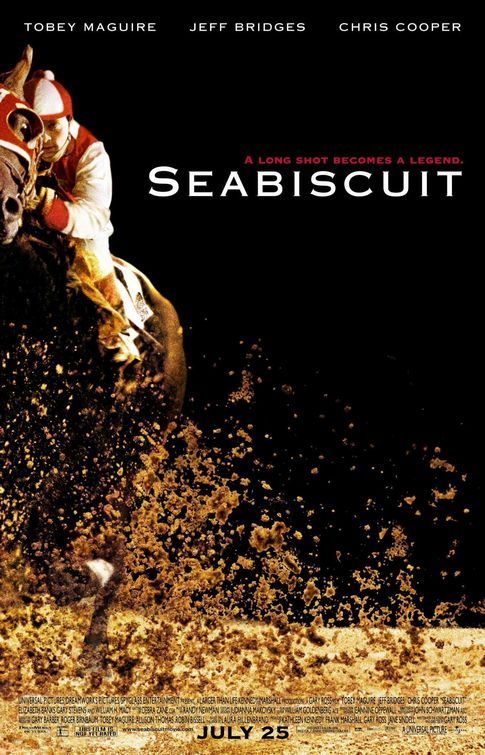
View On WordPress
#2003#Annie Corley#Anthony Klingman#Best Picture Project#Borden Flanagan#Cameron Bowen#Camillia Monet#Carl M. Craig#Chris Cooper#Clif Alvey#Dan Daily#Danny Strong#David Doty#David McCullough#Drama#Dylan Christopher#Ed Lauter#Elizabeth Banks#Gary Ross#Gary Stevens#Gianni Russo#Hans Howes#History#James Keane#Jamie Lee Redmon#Jeff Bridges#Joe Rocco Jr.#Laura Hillenbrand#Mariah Bess#Michael Angarano
1 note
·
View note
Text
A GIRL, A GUY, AND A GOB
March 14, 1941

Directed by Richard Wallace
Produced by Harold Lloyd for RKO Radio Pictures
Written by Bert Granet and Frank Ryan, based on a story by Grover Jones
Synopsis ~ A shy, quiet executive for a shipping firm who finds himself with a dilemma: he’s become smitten with his young temporary secretary but she’s the girlfriend of his Navy buddy - and the buddy is scheduled to be discharged in only a few days.

Note: “Gob” is a slang word for a sailor. This term first showed up in regard to sailors around 1909 and may have come from the word gobble. Reportedly, some people thought that sailors gobbled their food. The term also may come from the word gob, which means to spit, something sailors also reportedly do often.
PRINCIPAL CAST
Lucille Ball as (Dorothy ‘Dotty’ Duncan aka ‘The Girl’) is in her 52nd film since coming to Hollywood in 1933.

George Murphy (Claudius ‘Coffee’ Cup aka ‘The Gob’) was in four films with Lucille Ball between 1934 and 1941. In 1959, Murphy served as guest host of “The Westinghouse Desilu Playhouse” when Desi Arnaz took a role in his own anthology series. He was also a performer in “The Desilu Revue” aired in December 1959. As the host of “MGM Parade”, he interviewed Lucy and Desi in February 1956.
Edmond O'Brien (Stephen Herrick aka ‘The Guy’) won an Oscar in 1955 for The Barefoot Contessa. He was nominated a second time in 1965.
Henry Travers (Abel Martin) was nominated for an Oscar for Mrs. Miniver in 1943. He is best remembered for playing Clarence the Angel in It’s A Wonderful Life (1946).
Franklin Pangborn (Pet Shop Owner) did four films with Lucille Ball between 1937 and 1946.
George Cleveland (Pokey Duncan) did four more films with Lucille Ball till 1949.
Kathleen Howard (Jawme) makes her only appearance with Lucille Ball.
Marguerite Chapman (Cecilia Grange) makes her only appearance with Lucille Ball.
Lloyd Corrigan (Pigeon) did Two Smart People with Lucille Ball in 1949. He played the minister in “The Milton Berle Lucy-Desi Special” in 1959. He also did three episodes of “The Lucy Show.”
Mady Correll (Cora) makes her only appearance with Lucille Ball.
Frank McGlynn, Sr. (Pankington) makes his only appearance with Lucille Ball.
Doodles Weaver (Eddie) makes his only appearance with Lucille Ball.
Frank Sully (Salty) did four films with Lucille Ball before playing the man who delivers “The Freezer” on “I Love Lucy.”
Nella Walker (Mrs. Grange) also appeared with Lucille Ball in Fugitive Lady (1934).
Richard Lane (Recruiting Officer) previously appeared in three films with Lucille Ball in 1937 and 1938.
Irving Bacon (Mr. Merney) did seven films with Lucille Ball before playing Mr. Willoughby in in “The Marriage License” (1952) and Will Potter in “Ethel’s Hometown” (1955).
Rube Demarest (Ivory) makes his only appearance with Lucille Ball.
Charles Smith (Messenger) makes her only appearance with Lucille Ball.
Bob McKenzie (Porter) appeared in three other films with Lucille Ball.
Nora Cecil (Charwoman) makes her only appearance with Lucille Ball.
UNCREDITED CAST
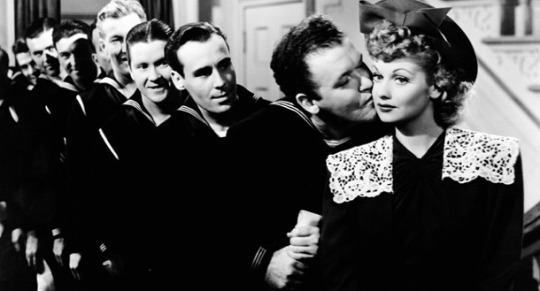
SAILORS
James Bush (Sailor Taking Address Book), Charles Flynn (Thin Sailor), Jack Lescoulie, George Ford, Art Rowlands, *Bernard Sell
HUSTLERS
Tom Quinn, Cyril Ring, Ralph Brooks
AT THE OPERA
Edward Peil Sr. (Assistant Manager), Eddie Arden (Opera Page Boy), Warren Ashe (Ticket Taker), Blue Washington (Doorman), Jimmy Cleary (Program Boy), Tom Costello (Floor Manager), William A. Boardway (Patron), Walter Byron (Patron), James Carlisle (Patron), Jean Fowler (Patron), Kenneth Gibson (Patron), Carl M. Leviness (Patron), John George (Newsboy Outside Opera House)
AT THE DANCE HALL
Carolyn Hughes (Girl), Charles Irwin (Emcee), Eddie Borden (Man), Eddie Hart (Ticket Taker #2), Dewey Robinson (Bouncer), Ronald R. Rondell (Ticket Taker)
AT THE MARRIAGE BUREAU & WEDDING CHAPEL
Wade Boteler (Uniformed Attendant), Homer Dickenson (Wedding Chapel Attendant), Harry "Snub" Pollard (Attendant), Wade Boteler (Uniformed Attendant), Fern Emmett (Middle-Aged Woman at Marriage Bureau), Henry Roquemore (Middle-Aged Man at Marriage Bureau), Effie Anderson (Marriage Bureau Clerk), Hal K. Dawson (Photographer)
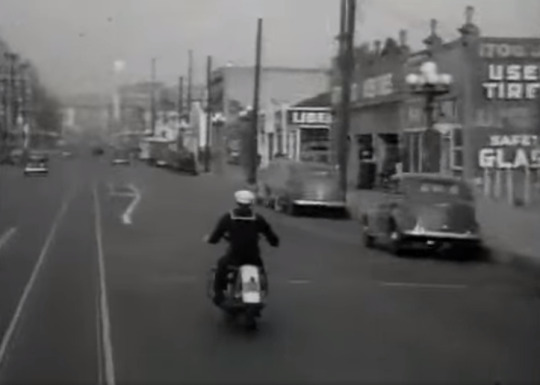
IN THE STREETS: PEDESTRIANS, BYSTANDERS, OBSERVERS
Mary Field (Woman on Street), Vince Barnett (Pedestrian), Leon Belasco (Taxi Driver), George Lloyd (Bystander Smoking Cigar), Joe Bernard (Tattoo Artist), George McKay (Joe - Counterman), Vince Barnett (Bystander with Packages), Victor Potel (Bystander Eating Popcorn), *Leon Belasco (First Taxi Driver), *Mike Lally (Second Taxi Driver), George Chandler (Bystander Betting Five Bucks), Irene Coleman (Bystander Watching Eddie Grow), Tom Coleman (Pedestrian), Andrew Tombes (Bus Conductor), Hal K. Dawson (Photographer), Edgar Dearing (Policeman), Fern Emmett (Middle-Aged Woman), Mary Field (Woman on Street), Bud Jamison (Tall Bystander), Tiny Jones (Passerby), Bert Moorhouse (Pedestrian), Bud Osborne (Bystander), Frank Mills (Laborer in Manhole), Andrew Tombes (Bus Conductor)
OTHERS
Sally Conlin (Little Girl)
Joe Geil (Boy)
Steve Pendleton (Mr. Adams)
Earle Hodgins (Sylvester P. Wurple)
Lloyd Ingraham (Announcer of Piano Winner)
Alex Pollard (Butler)
George Lollier (Grange's Chauffeur)
Alexander Pollard (Grange's Butler)
* actors who later did background work on Lucille Ball’s sitcoms.
3G TRIVIA
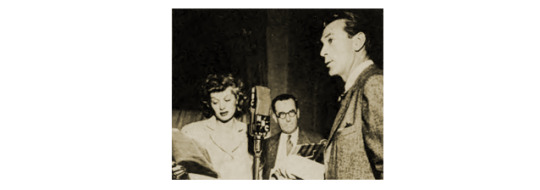
The film was dramatized for radio on “The Screen Guild Radio Theatre” on October 9, 1944, also starring Lucille Ball and George Murphy. They rerpised their roles on radio once again for “Old Gold Comedy Theatre” on February 11, 1945.
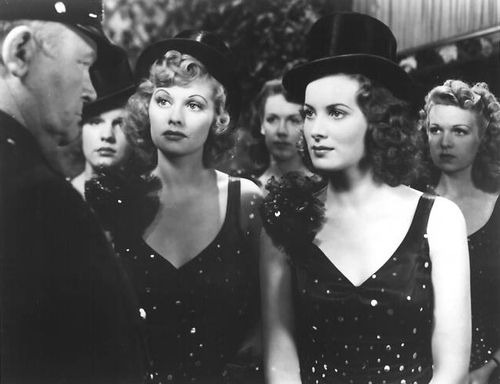
Maureen O'Hara was initially slated for the role played by Lucille Ball. Ball and O’Hara had done the 1940 film Dance, Girl, Dance together.
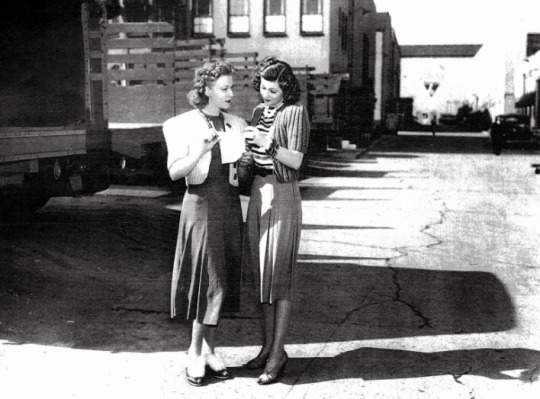
This film came towards the end of Lucille Ball's RKO days. She had already achieved leading lady status and would only make four more films for RKO before moving to MGM. She couldn’t know that she would one day own the studio with her husband, Desi Arnaz. Interestingly, RKO borrowed George Murphy from MGM for this film.
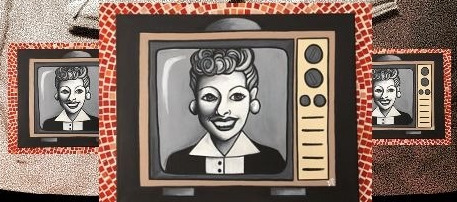
This film's earliest documented telecast took place in Altoona, Pennsylvania, on Sunday June 3, 1956 over TV station WFBG. That same week, Lucille Ball began filming season six of “I Love Lucy” in Hollywood.

In 1971, “The Carol Burnett Show” spoofed the film with “A Gob, a Girl and Her Galoshes".

The movie was referenced in the Emmy-winning documentary “Lucy and Desi: A Home Movie”.
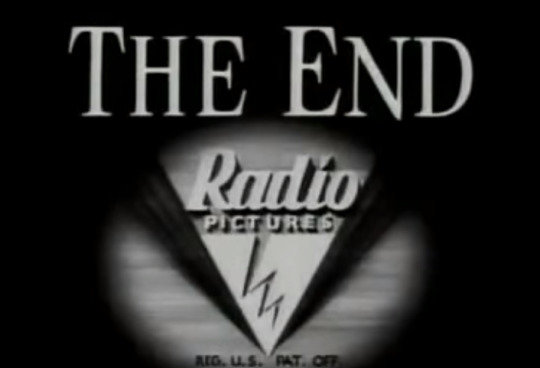
#Lucille Ball#A Girl A Guy and a Gob#RKO#George Murphy#Edmond O'Brien#Irving Bacon#Henry Travers#Franklin Pangborn#Lloyd Corrigan#Mike Lally#Leon Belasco#1941
2 notes
·
View notes
Text
In the world of fandoms
read it on the AO3 at https://ift.tt/3eqjbxM
by Tryingmikeywinters
Munro Jade Evans wakes up in a different body every day. Cliche storyline right? The one thing that sets this story aside from any other story where someone wakes up in a different body everyday, is the fact that Munro wakes up in the body of an original character, in a different fandom she is in everyday.
(Tags are to be added, please read the first chapter as it will have a better explication:)
Words: 346, Chapters: 1/1, Language: English
Fandoms: Primeval, Teenage Mutant Ninja Turtles (TV 2012), Total Drama (Cartoon), How to Train Your Dragon (Movies), The 100 (TV), Teen Wolf (TV), Zoo - Fandom, Heartland (TV), 僕のヒーローアカデミア | Boku no Hero Academia | My Hero Academia, Descendants (Disney Movies), Marvel Cinematic Universe, Harry Potter - J. K. Rowling, Rise of the Guardians (2012), The Walking Dead (TV), Wolfblood (TV), Anne with an E (TV), Ouran High School Host Club - All Media Types, Miraculous Ladybug, Young Dracula (TV), Supernatural, Degrassi, Zootopia (2016), Lost Girl (TV), Merlin (TV), Dork Diaries Series - Rachel Renee Russell, Frozen (Disney Movies), Big Hero 6 (2014), Glee, Barbie - All Media Types, Sing (2016), Hannah Montana (TV), Dance Academy, Sonny with a Chance, Liv and Maddie, Bratz - All Media Types, Victorious (TV), Jurassic World Trilogy (Movies), Jessie (TV), Brave (2012)
Rating: Not Rated
Warnings: No Archive Warnings Apply
Categories: F/F, F/M, M/M, Multi
Characters: Mal (Disney), Carlos de Vil, Jay (Disney), Evie (Disney), Ben (Disney: Descendants), Harry Hook, Jane (Disney: Descendants), Uma (Disney), Midoriya Izuku, Bakugou Katsuki, Connor Temple, Abby Maitland, Nick Cutter, Stephen Hart, Danny Quinn, Hilary James Becker, Gwen (Total Drama), Duncan (Total Drama), Noah (Total Drama), Courtney (Total Drama), Trent (Total Drama), Heather (Total Drama), Cody Anderson, Leshawna (Total Drama), Bridgette (Total Drama), Geoff (Total Drama), Lindsay (Total Drama), Tyler (Total Drama), Sierra (Total Drama), Alejandro Burromuerto, Zoey (Total Drama), Mike (Total Drama), Dawn (Total Drama), Beth (Total Drama), Harold McGrady V, Katie (Total Drama), Sadie (Total Drama), Eva (Total Drama), Izzy (Total Drama), Owen (Total Drama), Justin (Total Drama), Ezekiel (Total Drama), Scott (Total Drama), Sammy "Samey" (Total Drama), Sam (Total Drama), Anne Maria (Total Drama), Jasmine (Total Drama), Shawn (Total Drama), Sky (Total Drama), Topher (Total Drama), Ella (Total Drama), Kitty (Total Drama), Brody (Total Drama), Hiro Hamada, Tadashi Hamada, E. Aster Bunnymund, Jack Frost (Guardians of Childhood), Ty Borden, Amy Fleming, Lou Fleming, Mallory Wells, Georgie Fleming-Morris, Maddy Smith (Wolfblood), Rhydian Morris, Rachel Berry, Sam Evans, Quinn Fabray, Santana Lopez, Noah Puckerman, Mike Chang, Kurt Hummel, Maya Matlin, Mia Jones, Eli Goldsworthy, Adam Torres, Vladimir Dracula (Young Dracula), Ingrid Dracula, Sam Winchester, Dean Winchester, Castiel (Supernatural), Charlie Bradbury, Tony Stark, Peter Parker, Steve Rogers, Clint Barton, Natasha Romanov (Marvel), Bruce Banner, Thor (Marvel), Loki (Marvel), James "Bucky" Barnes, Marinette Dupain-Cheng | Ladybug, Adrien Agreste | Chat Noir, Marc Anciel, Nathaniel Kurtzberg, Luka Couffaine, Hiccup Horrendous Haddock III, Astrid Hofferson, Jade (Bratz), Yasmin (Bratz), Cloe (Bratz), Sasha (Bratz), Tara Webster, Kat Karamakov, Christian Reed, Sonny Munroe, Elsa (Disney), Anna (Disney), Nick Wilde, Judy Hopps, Owen Grady, Suoh Tamaki, Fujioka Haruhi, Hitachiin Hikaru, Hitachiin Kaoru, Kirishima Eijirou, Shinsou Hitoshi, Amajiki Tamaki, Toogata Mirio, Harry Potter, Hermione Granger, Ron Weasley, Fred Weasley, George Weasley, Draco Malfoy, Stiles Stilinski, Scott McCall (Teen Wolf), Isaac Lahey, Danny Mahealani, Derek Hale, Clarke Griffin, Bellamy Blake, Octavia Blake, Monty Green, Merlin (Merlin), Arthur Pendragon (Merlin), Rick Grimes, Carl Grimes, Jesus (Walking Dead), Aaron (Walking Dead), Michonne (Walking Dead), Negan (Walking Dead), Maggie Greene, Beth Greene
read it on the AO3 at https://ift.tt/3eqjbxM
1 note
·
View note
Text
Inventions
Adrenaline: (isolation of) John Jacob Abel, U.S., 1897.
Aerosol can: Erik Rotheim, Norway, 1926.
Air brake: George Westinghouse, U.S., 1868.
Air conditioning: Willis Carrier, U.S., 1911.
Airship: (non-rigid) Henri Giffard, France, 1852; (rigid) Ferdinand von Zeppelin, Germany, 1900.
Aluminum manufacture: (by electrolytic action) Charles M. Hall, U.S., 1866.
Anatomy, human: (De fabrica corporis humani, an illustrated systematic study of the human body) Andreas Vesalius, Belgium, 1543; (comparative: parts of an organism are correlated to the functioning whole) Georges Cuvier, France, 1799–1805.
Anesthetic: (first use of anesthetic—ether—on humans) Crawford W. Long, U.S., 1842.
Antibiotics: (first demonstration of antibiotic effect) Louis Pasteur, Jules-François Joubert, France, 1887; (discovery of penicillin, first modern antibiotic) Alexander Fleming, England, 1928; (penicillin’s infection-fighting properties) Howard Florey, Ernst Chain, England, 1940.
Antiseptic: (surgery) Joseph Lister, England, 1867.
Antitoxin, diphtheria: Emil von Behring, Germany, 1890.
Appliances, electric: (fan) Schuyler Wheeler, U.S., 1882; (flatiron) Henry W. Seely, U.S., 1882; (stove) Hadaway, U.S., 1896; (washing machine) Alva Fisher, U.S., 1906.
Aqualung: Jacques-Yves Cousteau, Emile Gagnan, France, 1943.
Aspirin: Dr. Felix Hoffman, Germany, 1899.
Astronomical calculator: The Antikythera device, first century B.C., Greece. Found off island of Antikythera in 1900.
Atom: (nuclear model of) Ernest Rutherford, England, 1911.
Atomic theory: (ancient) Leucippus, Democritus, Greece, c. 500 B.C.; Lucretius, Rome c.100 B.C.; (modern) John Dalton, England, 1808.
Atomic structure: (formulated nuclear model of atom, Rutherford model) Ernest Rutherford, England, 1911; (proposed current concept of atomic structure, the Bohr model) Niels Bohr, Denmark, 1913.
Automobile: (first with internal combustion engine, 250 rpm) Karl Benz, Germany, 1885; (first with practical high-speed internal combustion engine, 900 rpm) Gottlieb Daimler, Germany, 1885; (first true automobile, not carriage with motor) René Panhard, Emile Lavassor, France, 1891; (carburetor, spray) Charles E. Duryea, U.S., 1892.
Autopilot: (for aircraft) Elmer A. Sperry, U.S., c.1910, first successful test, 1912, in a Curtiss flying boat.
Avogadro’s law: (equal volumes of all gases at the same temperature and pressure contain equal number of molecules) Amedeo Avogadro, Italy, 1811.
Bacteria: Anton van Leeuwenhoek, The Netherlands, 1683.
Balloon, hot-air: Joseph and Jacques Montgolfier, France, 1783.
Barbed wire: (most popular) Joseph E. Glidden, U.S., 1873.
Bar codes: (computer-scanned binary signal code):
(retail trade use) Monarch Marking, U.S. 1970; (industrial use) Plessey Telecommunications, England, 1970.
Barometer: Evangelista Torricelli, Italy, 1643.
Bicycle: Karl D. von Sauerbronn, Germany, 1816; (first modern model) James Starley, England, 1884.
Big Bang theory: (the universe originated with a huge explosion) George LeMaitre, Belgium, 1927; (modified LeMaitre theory labeled “Big Bang”) George A. Gamow, U.S., 1948; (cosmic microwave background radiation discovered, confirms theory) Arno A. Penzias and Robert W. Wilson, U.S., 1965.
Blood, circulation of: William Harvey, England, 1628.
Boyle’s law: (relation between pressure and volume in gases) Robert Boyle, Ireland, 1662.
Braille: Louis Braille, France, 1829.
Bridges: (suspension, iron chains) James Finley, Pa., 1800; (wire suspension) Marc Seguin, Lyons, 1825; (truss) Ithiel Town, U.S., 1820.
Bullet: (conical) Claude Minié, France, 1849.
Calculating machine: (logarithms: made multiplying easier and thus calculators practical) John Napier, Scotland, 1614; (slide rule) William Oughtred, England, 1632; (digital calculator) Blaise Pascal, 1642; (multiplication machine) Gottfried Leibniz, Germany, 1671; (important 19th-century contributors to modern machine) Frank S. Baldwin, Jay R. Monroe, Dorr E. Felt, W. T. Ohdner, William Burroughs, all U.S.; (“analytical engine” design, included concepts of programming, taping) Charles Babbage, England, 1835.
Calculus: Isaac Newton, England, 1669; (differential calculus) Gottfried Leibniz, Germany, 1684.
Camera: (hand-held) George Eastman, U.S., 1888; (Polaroid Land) Edwin Land, U.S., 1948.
“Canals” of Mars:Giovanni Schiaparelli, Italy, 1877.
Carpet sweeper: Melville R. Bissell, U.S., 1876.
Car radio: William Lear, Elmer Wavering, U.S., 1929, manufactured by Galvin Manufacturing Co., “Motorola.”
Cells: (word used to describe microscopic examination of cork) Robert Hooke, England, 1665; (theory: cells are common structural and functional unit of all living organisms) Theodor Schwann, Matthias Schleiden, 1838–1839.
Cement, Portland: Joseph Aspdin, England, 1824.
Chewing gum: (spruce-based) John Curtis, U.S., 1848; (chicle-based) Thomas Adams, U.S., 1870.
Cholera bacterium: Robert Koch, Germany, 1883.
Circuit, integrated: (theoretical) G.W.A. Dummer, England, 1952; (phase-shift oscillator) Jack S. Kilby, Texas Instruments, U.S., 1959.
Classification of plants: (first modern, based on comparative study of forms) Andrea Cesalpino, Italy, 1583; (classification of plants and animals by genera and species) Carolus Linnaeus, Sweden, 1737–1753.
Clock, pendulum: Christian Huygens, The Netherlands, 1656.
Coca-Cola: John Pemberton, U.S., 1886.
Combustion: (nature of) Antoine Lavoisier, France, 1777.
Compact disk: RCA, U.S., 1972.
Computers: (first design of analytical engine) Charles Babbage, 1830s; (ENIAC, Electronic Numerical Integrator and Calculator, first all-electronic, completed) 1945; (dedicated at University of Pennsylvania) 1946; (UNIVAC, Universal Automatic Computer, handled both numeric and alphabetic data) 1951.
Concrete: (reinforced) Joseph Monier, France, 1877.
Condensed milk: Gail Borden, U.S., 1853.
Conditioned reflex: Ivan Pavlov, Russia, c.1910.
Conservation of electric charge: (the total electric charge of the universe or any closed system is constant) Benjamin Franklin, U.S., 1751–1754.
Contagion theory: (infectious diseases caused by living agent transmitted from person to person) Girolamo Fracastoro, Italy, 1546.
Continental drift theory: (geographer who pieced together continents into a single landmass on maps) Antonio Snider-Pellegrini, France, 1858; (first proposed in lecture) Frank Taylor, U.S.; (first comprehensive detailed theory) Alfred Wegener, Germany, 1912.
Contraceptive, oral: Gregory Pincus, Min Chuch Chang, John Rock, Carl Djerassi, U.S., 1951.
Converter, Bessemer: William Kelly, U.S., 1851.
Cosmetics: Egypt, c. 4000 B.C.
Cosamic string theory: (first postulated) Thomas Kibble, 1976.
Cotton gin: Eli Whitney, U.S., 1793.
Crossbow: China, c. 300 B.C.
Cyclotron: Ernest O. Lawrence, U.S., 1931.
Deuterium: (heavy hydrogen) Harold Urey, U.S., 1931.
Disease: (chemicals in treatment of) crusaded by Philippus Paracelsus, 1527–1541; (germ theory) Louis Pasteur, France, 1862–1877.
DNA: (deoxyribonucleic acid) Friedrich Meischer, Germany, 1869; (determination of double-helical structure) Rosalind Elsie Franklin, F. H. Crick, England, James D. Watson, U.S., 1953.
Dye: (aniline, start of synthetic dye industry) William H. Perkin, England, 1856.
Dynamite: Alfred Nobel, Sweden, 1867.
Electric cooking utensil: (first) patented by St. George Lane-Fox, England, 1874.
Electric generator (dynamo): (laboratory model) Michael Faraday, England, 1832; Joseph Henry, U.S., c.1832; (hand-driven model) Hippolyte Pixii, France, 1833; (alternating-current generator) Nikola Tesla, U.S., 1892.
Electric lamp: (arc lamp) Sir Humphrey Davy, England, 1801; (fluorescent lamp) A.E. Becquerel, France, 1867; (incandescent lamp) Sir Joseph Swann, England, Thomas A. Edison, U.S., contemporaneously, 1870s; (carbon arc street lamp) Charles F. Brush, U.S., 1879; (first widely marketed incandescent lamp) Thomas A. Edison, U.S., 1879; (mercury vapor lamp) Peter Cooper Hewitt, U.S., 1903; (neon lamp) Georges Claude, France, 1911; (tungsten filament) Irving Langmuir, U.S., 1915.
Electrocardiography: Demonstrated by Augustus Waller, 1887; (first practical device for recording activity of heart) Willem Einthoven, 1903, Dutch physiologist.
Electromagnet: William Sturgeon, England, 1823.
Electron: Sir Joseph J. Thompson, England, 1897.
Elevator, passenger: (safety device permitting use by passengers) Elisha G. Otis, U.S., 1852; (elevator utilizing safety device) 1857.
E = mc2: (equivalence of mass and energy) Albert Einstein, Switzerland, 1907.
Engine, internal combustion: No single inventor. Fundamental theory established by Sadi Carnot, France, 1824; (two-stroke) Etienne Lenoir, France, 1860; (ideal operating cycle for four-stroke) Alphonse Beau de Roche, France, 1862; (operating four-stroke) Nikolaus Otto, Germany, 1876; (diesel) Rudolf Diesel, Germany, 1892; (rotary) Felix Wankel, Germany, 1956.
Evolution: (organic) Jean-Baptiste Lamarck, France, 1809; (by natural selection) Charles Darwin, England, 1859.
Exclusion principle: (no two electrons in an atom can occupy the same energy level) Wolfgang Pauli, Germany, 1925.
Expanding universe theory: (first proposed) George LeMaitre, Belgium, 1927; (discovered first direct evidence that the universe is expanding) Edwin P. Hubble, U.S., 1929; (Hubble constant: a measure of the rate at which the universe is expanding) Edwin P. Hubble, U.S., 1929.
Falling bodies, law of: Galileo Galilei, Italy, 1590.
Fermentation: (microorganisms as cause of) Louis Pasteur, France, c.1860.
Fiber optics: Narinder Kapany, England, 1955.
Fibers, man-made: (nitrocellulose fibers treated to change flammable nitrocellulose to harmless cellulose, precursor of rayon) Sir Joseph Swann, England, 1883; (rayon) Count Hilaire de Chardonnet, France, 1889; (Celanese) Henry and Camille Dreyfuss, U.S., England, 1921; (research on polyesters and polyamides, basis for modern man-made fibers) U.S., England, Germany, 1930s; (nylon) Wallace H. Carothers, U.S., 1935.
Frozen food: Clarence Birdseye, U.S., 1924.
Gene transfer: (human) Steven Rosenberg, R. Michael Blaese, W. French Anderson, U.S., 1989.
Geometry, elements of: Euclid, Alexandria, Egypt, c. 300 B.C.; (analytic) René Descartes, France; and Pierre de Fermat, Switzerland, 1637.
Gravitation, law of: Sir Isaac Newton, England, c.1665 (published 1687).
Gunpowder: China, c.700.
Gyrocompass: Elmer A. Sperry, U.S., 1905.
Gyroscope: Léon Foucault, France, 1852.
Halley’s Comet: Edmund Halley, England, 1705.
Heart implanted in human, permanent artificial:Dr. Robert Jarvik, U.S., 1982.
Heart, temporary artificial: Willem Kolft, 1957.
Helicopter: (double rotor) Heinrich Focke, Germany, 1936; (single rotor) Igor Sikorsky, U.S., 1939.
Helium first observed on sun: Sir Joseph Lockyer, England, 1868.
Heredity, laws of: Gregor Mendel, Austria, 1865.
Holograph: Dennis Gabor, England, 1947.
Home videotape systems (VCR): (Betamax) Sony, Japan, 1975; (VHS) Matsushita, Japan, 1975.
Ice age theory: Louis Agassiz, Swiss-American, 1840.
Induction, electric: Joseph Henry, U.S., 1828.
Insulin: (first isolated) Sir Frederick G. Banting and Charles H. Best, Canada, 1921; (discovery first published) Banting and Best, 1922; (Nobel Prize awarded for purification for use in humans) John Macleod and Banting, 1923; (first synthesized), China, 1966.
Intelligence testing: Alfred Binet, Theodore Simon, France, 1905.
Interferon: Alick Isaacs, Jean Lindemann, England, Switzerland, 1957.
Isotopes: (concept of) Frederick Soddy, England, 1912; (stable isotopes) J. J. Thompson, England, 1913; (existence demonstrated by mass spectrography) Francis W. Ashton, 1919.
Jet propulsion: (engine) Sir Frank Whittle, England, Hans von Ohain, Germany, 1936; (aircraft) Heinkel He 178, 1939.
Kinetic theory of gases: (molecules of a gas are in a state of rapid motion) Daniel Bernoulli, Switzerland, 1738.
Laser: (theoretical work on) Charles H. Townes, Arthur L. Schawlow, U.S., N. Basov, A. Prokhorov, U.S.S.R., 1958; (first working model) T. H. Maiman, U.S., 1960.
Lawn mower: Edwin Budding, John Ferrabee, England, 1830–1831.
LCD (liquid crystal display): Hoffmann-La Roche, Switzerland, 1970.
Lens, bifocal: Benjamin Franklin, U.S., c.1760.
Leyden jar: (prototype electrical condenser) Canon E. G. von Kleist of Kamin, Pomerania, 1745; independently evolved by Cunaeus and P. van Musschenbroek, University of Leyden, Holland, 1746, from where name originated.
Light, nature of: (wave theory) Christian Huygens, The Netherlands, 1678; (electromagnetic theory) James Clerk Maxwell, England, 1873.
Light, speed of: (theory that light has finite velocity) Olaus Roemer, Denmark, 1675.
Lightning rod: Benjamin Franklin, U.S., 1752.
Locomotive: (steam powered) Richard Trevithick, England, 1804; (first practical, due to multiple-fire-tube boiler) George Stephenson, England, 1829; (largest steam-powered) Union Pacific’s “Big Boy,” U.S., 1941.
Lock, cylinder: Linus Yale, U.S., 1851.
Loom: (horizontal, two-beamed) Egypt, c. 4400 B.C.; (Jacquard drawloom, pattern controlled by punch cards) Jacques de Vaucanson, France, 1745, Joseph-Marie Jacquard, 1801; (flying shuttle) John Kay, England, 1733; (power-driven loom) Edmund Cartwright, England, 1785.
Machine gun: (hand-cranked multibarrel) Richard J. Gatling, U.S., 1862; (practical single barrel, belt-fed) Hiram S. Maxim, Anglo-American, 1884.
Magnet, Earth is: William Gilbert, England, 1600.
Match: (phosphorus) François Derosne, France, 1816; (friction) Charles Sauria, France, 1831; (safety) J. E. Lundstrom, Sweden, 1855.
Measles vaccine: John F. Enders, Thomas Peebles, U.S., 1953.
Metric system: revolutionary government of France, 1790–1801.
Microphone: Charles Wheatstone, England, 1827.
Microscope: (compound) Zacharias Janssen, The Netherlands, 1590; (electron) Vladimir Zworykin et al., U.S., Canada, Germany, 1932–1939.
Microwave oven: Percy Spencer, U.S., 1947.
Motion, laws of: Isaac Newton, England, 1687.
Motion pictures: Thomas A. Edison, U.S., 1893.
Motion pictures, sound: Product of various inventions. First picture with synchronized musical score: Don Juan, 1926; with spoken dialogue: The Jazz Singer, 1927; both Warner Bros.
Motor, electric: Michael Faraday, England, 1822; (alternating-current) Nikola Tesla, U.S., 1892.
Motorcycle: (motor tricycle) Edward Butler, England, 1884; (gasoline-engine motorcycle) Gottlieb Daimler, Germany, 1885.
Moving assembly line: Henry Ford, U.S., 1913.
Neptune: (discovery of) Johann Galle, Germany, 1846.
Neptunium: (first transuranic element, synthesis of) Edward M. McMillan, Philip H. Abelson, U.S., 1940.
Neutron: James Chadwick, England, 1932.
Neutron-induced radiation: Enrico Fermi et al., Italy, 1934.
Nitroglycerin: Ascanio Sobrero, Italy, 1846.
Nuclear fission: Otto Hahn, Fritz Strassmann, Germany, 1938.
Nuclear reactor: Enrico Fermi, Italy, et al., 1942.
Ohm’s law: (relationship between strength of electric current, electromotive force, and circuit resistance) Georg S. Ohm, Germany, 1827.
Oil well: Edwin L. Drake, U.S., 1859.
Oxygen: (isolation of) Joseph Priestley, 1774; Carl Scheele, 1773.
Ozone: Christian Schönbein, Germany, 1839.
Pacemaker: (internal) Clarence W. Lillehie, Earl Bakk, U.S., 1957.
Paper China, c.100 A.D.
Parachute: Louis S. Lenormand, France, 1783.
Pen: (fountain) Lewis E. Waterman, U.S., 1884; (ball-point, for marking on rough surfaces) John H. Loud, U.S., 1888; (ball-point, for handwriting) Lazlo Biro, Argentina, 1944.
Periodic law: (that properties of elements are functions of their atomic weights) Dmitri Mendeleev, Russia, 1869.
Periodic table: (arrangement of chemical elements based on periodic law) Dmitri Mendeleev, Russia, 1869.
Phonograph: Thomas A. Edison, U.S., 1877.
Photography: (first paper negative, first photograph, on metal) Joseph Nicéphore Niepce, France, 1816–1827; (discovery of fixative powers of hyposulfite of soda) Sir John Herschel, England, 1819; (first direct positive image on silver plate, the daguerreotype) Louis Daguerre, based on work with Niepce, France, 1839; (first paper negative from which a number of positive prints could be made) William Talbot, England, 1841. Work of these four men, taken together, forms basis for all modern photography. (First color images) Alexandre Becquerel, Claude Niepce de Saint-Victor, France, 1848–1860; (commercial color film with three emulsion layers, Kodachrome) U.S., 1935.
Photovoltaic effect: (light falling on certain materials can produce electricity) Edmund Becquerel, France, 1839.
Piano: (Hammerklavier) Bartolommeo Cristofori, Italy, 1709; (pianoforte with sustaining and damper pedals) John Broadwood, England, 1873.
Planetary motion, laws of: Johannes Kepler, Germany, 1609, 1619.
Plant respiration and photosynthesis: Jan Ingenhousz, Holland, 1779.
Plastics: (first material, nitrocellulose softened by vegetable oil, camphor, precursor to Celluloid) Alexander Parkes, England, 1855; (Celluloid, involving recognition of vital effect of camphor) John W. Hyatt, U.S., 1869; (Bakelite, first completely synthetic plastic) Leo H. Baekeland, U.S., 1910; (theoretical background of macromolecules and process of polymerization on which modern plastics industry rests) Hermann Staudinger, Germany, 1922.
Plate tectonics: Alfred Wegener, Germany, 1912–1915.
Plow, forked: Mesopotamia, before 3000 B.C.
Plutonium, synthesis of: Glenn T. Seaborg, Edwin M. McMillan, Arthur C. Wahl, Joseph W. Kennedy, U.S., 1941.
Polio, vaccine: (experimentally safe dead-virus vaccine) Jonas E. Salk, U.S., 1952; (effective large-scale field trials) 1954; (officially approved) 1955; (safe oral live-virus vaccine developed) Albert B. Sabin, U.S., 1954; (available in the U.S.) 1960.
Positron: Carl D. Anderson, U.S., 1932.
Pressure cooker: (early version) Denis Papin, France, 1679.
Printing: (block) Japan, c.700; (movable type) Korea, c.1400; Johann Gutenberg, Germany, c.1450 (lithography, offset) Aloys Senefelder, Germany, 1796; (rotary press) Richard Hoe, U.S., 1844; (linotype) Ottmar Mergenthaler, U.S., 1884.
Probability theory: René Descartes, France; and Pierre de Fermat, Switzerland, 1654.
Proton: Ernest Rutherford, England, 1919.
Prozac: (antidepressant fluoxetine) Bryan B. Malloy, Scotland, and Klaus K. Schmiegel, U.S., 1972; (released for use in U.S.) Eli Lilly & Company, 1987.
Psychoanalysis: Sigmund Freud, Austria, c.1904.
Pulsars: Antony Hewish and Jocelyn Bell Burnel, England, 1967.
Quantum theory: (general) Max Planck, Germany, 1900; (sub-atomic) Niels Bohr, Denmark, 1913; (quantum mechanics) Werner Heisenberg, Erwin Schrödinger, Germany, 1925.
Quarks: Jerome Friedman, Henry Kendall, Richard Taylor, U.S., 1967.
Quasars: Marten Schmidt, U.S., 1963.
Rabies immunization: Louis Pasteur, France, 1885.
Radar: (limited to one-mile range) Christian Hulsmeyer, Germany, 1904; (pulse modulation, used for measuring height of ionosphere) Gregory Breit, Merle Tuve, U.S., 1925; (first practical radar—radio detection and ranging) Sir Robert Watson-Watt, England, 1934–1935.
Radio: (electromagnetism, theory of) James Clerk Maxwell, England, 1873; (spark coil, generator of electromagnetic waves) Heinrich Hertz, Germany, 1886; (first practical system of wireless telegraphy) Guglielmo Marconi, Italy, 1895; (first long-distance telegraphic radio signal sent across the Atlantic) Marconi, 1901; (vacuum electron tube, basis for radio telephony) Sir John Fleming, England, 1904; (triode amplifying tube) Lee de Forest, U.S., 1906; (regenerative circuit, allowing long-distance sound reception) Edwin H. Armstrong, U.S., 1912; (frequency modulation—FM) Edwin H. Armstrong, U.S., 1933.
Radioactivity: (X-rays) Wilhelm K. Roentgen, Germany, 1895; (radioactivity of uranium) Henri Becquerel, France, 1896; (radioactive elements, radium and polonium in uranium ore) Marie Sklodowska-Curie, Pierre Curie, France, 1898; (classification of alpha and beta particle radiation) Pierre Curie, France, 1900; (gamma radiation) Paul-Ulrich Villard, France, 1900.
Radiocarbon dating, carbon-14 method: (discovered) 1947, Willard F. Libby, U.S.; (first demonstrated) U.S., 1950.
Radio signals, extraterrestrial: first known radio noise signals were received by U.S. engineer, Karl Jansky, originating from the Galactic Center, 1931.
Radio waves: (cosmic sources, led to radio astronomy) Karl Jansky, U.S., 1932.
Razor: (safety, successfully marketed) King Gillette, U.S., 1901; (electric) Jacob Schick, U.S., 1928, 1931.
Reaper: Cyrus McCormick, U.S., 1834.
Refrigerator: Alexander Twining, U.S., James Harrison, Australia, 1850; (first with a compressor device) the Domelse, Chicago, U.S., 1913.
Refrigerator ship: (first) the Frigorifique, cooling unit designed by Charles Teller, France, 1877.
Relativity: (special and general theories of) Albert Einstein, Switzerland, Germany, U.S., 1905–1953.
Revolver: Samuel Colt, U.S., 1835.
Richter scale: Charles F. Richter, U.S., 1935.
Rifle: (muzzle-loaded) Italy, Germany, c.1475; (breech-loaded) England, France, Germany, U.S., c.1866; (bolt-action) Paul von Mauser, Germany, 1889; (automatic) John Browning, U.S., 1918.
Rocket: (liquid-fueled) Robert Goddard, U.S., 1926.
Roller bearing: (wooden for cartwheel) Germany or France, c.100 B.C.
Rotation of Earth: Jean Bernard Foucault, France, 1851.
Royal Observatory, Greenwich: established in 1675 by Charles II of England; John Flamsteed first Astronomer Royal.
Rubber: (vulcanization process) Charles Goodyear, U.S., 1839.
Saccharin: Constantine Fuhlberg, Ira Remsen, U.S., 1879.
Safety pin: Walter Hunt, U.S., 1849.
Saturn, ring around: Christian Huygens, The Netherlands, 1659.
“Scotch” tape:Richard Drew, U.S., 1929.
Screw propeller: Sir Francis P. Smith, England, 1836; John Ericsson, England, worked independently of and simultaneously with Smith, 1837.
Seismograph: (first accurate) John Milne, England, 1880.
Sewing machine: Elias Howe, U.S., 1846; (continuous stitch) Isaac Singer, U.S., 1851.
Solar energy: First realistic application of solar energy using parabolic solar reflector to drive caloric engine on steam boiler, John Ericsson, U.S., 1860s.
Solar system, universe: (Sun-centered universe) Nicolaus Copernicus, Warsaw, 1543; (establishment of planetary orbits as elliptical) Johannes Kepler, Germany, 1609; (infinity of universe) Giordano Bruno, Italian monk, 1584.
Spectrum: (heterogeneity of light) Sir Isaac Newton, England, 1665–1666.
Spectrum analysis: Gustav Kirchhoff, Robert Bunsen, Germany, 1859.
Spermatozoa: Anton van Leeuwenhoek, The Netherlands, 1683.
Spinning: (spinning wheel) India, introduced to Europe in Middle Ages; (Saxony wheel, continuous spinning of wool or cotton yarn) England, c.1500–1600; (spinning jenny) James Hargreaves, England, 1764; (spinning frame) Sir Richard Arkwright, England, 1769; (spinning mule, completed mechanization of spinning, permitting production of yarn to keep up with demands of modern looms) Samuel Crompton, England, 1779.
Star catalog: (first modern) Tycho Brahe, Denmark, 1572.
Steam engine: (first commercial version based on principles of French physicist Denis Papin) Thomas Savery, England, 1639; (atmospheric steam engine) Thomas Newcomen, England, 1705; (steam engine for pumping water from collieries) Savery, Newcomen, 1725; (modern condensing, double acting) James Watt, England, 1782.
Steamship: Claude de Jouffroy d’Abbans, France, 1783; James Rumsey, U.S., 1787; John Fitch, U.S., 1790. All preceded Robert Fulton, U.S., 1807, credited with launching first commercially successful steamship.
Stethoscope: René Laënnec, France, 1819.
Sulfa drugs: (parent compound, para-aminobenzenesulfanomide) Paul Gelmo, Austria, 1908; (antibacterial activity) Gerhard Domagk, Germany, 1935.
Superconductivity: (theory) Bardeen, Cooper, Scheiffer, U.S., 1957.
Symbolic logic: George Boule, 1854; (modern) Bertrand Russell, Alfred North Whitehead, England, 1910–1913.
Tank, military: Sir Ernest Swinton, England, 1914.
Tape recorder: (magnetic steel tape) Valdemar Poulsen, Denmark, 1899.
Teflon: DuPont, U.S., 1943.
Telegraph: Samuel F. B. Morse, U.S., 1837.
Telephone: Alexander Graham Bell, U.S., 1876.
Telescope: Hans Lippershey, The Netherlands, 1608; (astronomical) Galileo Galilei, Italy, 1609; (reflecting) Isaac Newton, England, 1668.
Television: (Iconoscope–T.V. camera table), Vladimir Zworkin, U.S., 1923, and also kinescope (cathode ray tube), 1928; (mechanical disk-scanning method) successfully demonstrated by J.K. Baird, England, C.F. Jenkins, U.S., 1926; (first all-electric television image), 1927, Philo T. Farnsworth, U.S; (color, mechanical disk) Baird, 1928; (color, compatible with black and white) George Valensi, France, 1938; (color, sequential rotating filter) Peter Goldmark, U.S., first introduced, 1951; (color, compatible with black and white) commercially introduced in U.S., National Television Systems Committee, 1953.
Thermodynamics: (first law: energy cannot be created or destroyed, only converted from one form to another) Julius von Mayer, Germany, 1842; James Joule, England, 1843; (second law: heat cannot of itself pass from a colder to a warmer body) Rudolph Clausius, Germany, 1850; (third law: the entropy of ordered solids reaches zero at the absolute zero of temperature) Walter Nernst, Germany, 1918.
Thermometer: (open-column) Galileo Galilei, c.1593; (clinical) Santorio Santorio, Padua, c.1615; (mercury, also Fahrenheit scale) Gabriel D. Fahrenheit, Germany, 1714; (centigrade scale) Anders Celsius, Sweden, 1742; (absolute-temperature, or Kelvin, scale) William Thompson, Lord Kelvin, England, 1848.
Tire, pneumatic: Robert W. Thompson, England, 1845; (bicycle tire) John B. Dunlop, Northern Ireland, 1888.
Toilet, flush: Product of Minoan civilization, Crete, c. 2000 B.C. Alleged invention by “Thomas Crapper” is untrue.
Tractor: Benjamin Holt, U.S., 1900.
Transformer, electric: William Stanley, U.S., 1885.
Transistor: John Bardeen, Walter H. Brattain, William B. Shockley, U.S., 1947.
Tuberculosis bacterium: Robert Koch, Germany, 1882.
Typewriter: Christopher Sholes, Carlos Glidden, U.S., 1867.
Uncertainty principle: (that position and velocity of an object cannot both be measured exactly, at the same time) Werner Heisenberg, Germany, 1927.
Uranus: (first planet discovered in recorded history) William Herschel, England, 1781.
Vaccination: Edward Jenner, England, 1796.
Vacuum cleaner: (manually operated) Ives W. McGaffey, 1869; (electric) Hubert C. Booth, England, 1901; (upright) J. Murray Spangler, U.S., 1907.
Van Allen (radiation) Belt: (around Earth) James Van Allen, U.S., 1958.
Video disk: Philips Co., The Netherlands, 1972.
Vitamins: (hypothesis of disease deficiency) Sir F. G. Hopkins, Casimir Funk, England, 1912; (vitamin A) Elmer V. McCollum, M. Davis, U.S., 1912–1914; (vitamin B) McCollum, U.S., 1915–1916; (thiamin, B1) Casimir Funk, England, 1912; (riboflavin, B2) D. T. Smith, E. G. Hendrick, U.S., 1926; (niacin) Conrad Elvehjem, U.S., 1937; (B6) Paul Gyorgy, U.S., 1934; (vitamin C) C. A. Hoist, T. Froelich, Norway, 1912; (vitamin D) McCollum, U.S., 1922; (folic acid) Lucy Wills, England, 1933.
Voltaic pile: (forerunner of modern battery, first source of continuous electric current) Alessandro Volta, Italy, 1800.
Wallpaper: Europe, 16th and 17th century.
Wassermann test: (for syphilis) August von Wassermann, Germany, 1906.
Wheel: (cart, solid wood) Mesopotamia, c.3800–3600 B.C.
Windmill: Persia, c.600.
World Wide Web: (developed while working at CERN) Tim Berners-Lee, England, 1989; (development of Mosaic browser makes WWW available for general use) Marc Andreeson, U.S., 1993.
Xerography: Chester Carlson, U.S., 1938.
Zero: India, c.600; (absolute zero temperature, cessation of all molecular energy) William Thompson, Lord Kelvin, England, 1848.
Zipper: W. L. Judson, U.S., 1891.
7 notes
·
View notes
Text
Birthdays 11.9
Beer Birthdays
Peter Barbey (founder, Peter Barbey & Sons Brewery, Reading, Pennsylvania; 1825)
Jack Curtin
Five Favorite Birthdays
Gail Borden; dairyman, inventor (1801)
Hedy Lamarr; actor, inventor (1913)
Carl Sagan; scientist, writer (1934)
Anne Sexton; writer (1928)
Ed Wynn; actor (1886)
Famous Birthdays
Spiro T. Agnew; disgraced U.S. vice-president (1918)
Benjamin Banneker; mathematician, astronomer (1731)
Hermann Conring; German philosopher (1606)
Dorothy Dandridge; actor (1923)
Sandra "Pepa" Denton; pop singer (1964)
Edwin Drake; discovered oil in Pennsylvania (1819)
Marie Dressler; actor (1869)
David Duvel; golf player (1971)
Lou Ferrigno; actor, bodybuilder (1951)
Tom Fogerty; rock singer (1941)
Robert Frank; Swiss-American photographer (1924)
J. William Fulbright; politician, fellowship creator (1905)
Gigo Gabashvili; Georgian painter (1862)
Bob Gibson; St. Louis Cardinals P (1935)
Whitey Herzog; baseball player (1931)
Allama Muhammad Iqbal; Indian poet, philosopher (1877)
Velimir Khlebnikov; Russian poet and playwright (1885)
Nick Lachey; pop singer (1973)
Bohdan Lepky; Ukrainian author and poet (1872)
Elijah Lovejoy; abolitionist (1802)
Phil May; English singer-songwriter (1944)
Roger McGough; English author, poet, and playwright (1937)
Arthur Rudolph; German scientist and engineer (1906)
James Schuyler; poet and author 1923)
Giles Gilbert Scott, English architect, designed red telephone box (1880)
Sisqó; singer-songwriter and actor (1978)
Mikhail Tal; Latvian-Russian chess player (1936)
Heiti Talvik; Estonian poet (1904)
Susan Tedeschi; singer-songwriter (1970)
Lio Tipton; actor and model (1988)
Mary Travers; folk singer (1936)
Ivan Turgenev; Russian writer (1818)
Tom Weiskopf; golf player (1942)
Hermann Weyl; German mathematician, physicist, and philosopher (1885)
Stanford White; architect (1853)
0 notes
Photo

Friday Releases for October 7
Friday is the busiest day of the week for new releases, so we've decided to collect them all in one place. Friday Releases for October 7 include Werewolf By Night, Triangle Of Sadness, Component System with the Auto Reverse, and more.
Werewolf By Night
Werewolf By Night, the new movie from Michael Giacchino, is out today.
On a dark and somber night, a secret cabal of monster hunters emerge from the shadows and gather at the foreboding Bloodstone Temple following the death of their leader. In a strange and macabre memorial to the leader's life, the attendees are thrust into a mysterious and deadly competition for a powerful relic – a hunt that will ultimately bring them face to face with a dangerous monster.
Triangle Of Sadness
Triangle Of Sadness, the new movie from Ruben Östlund, is out today.
In Ruben Östlund’s wickedly funny Palme d’Or winner, social hierarchy is turned upside down, revealing the tawdry relationship between power and beauty. Celebrity model couple, Carl (Harris Dickinson) and Yaya (Charlbi Dean), are invited on a luxury cruise for the uber-rich, helmed by an unhinged boat captain (Woody Harrelson). What first appeared instagrammable ends catastrophically, leaving the survivors stranded on a desert island and fighting for survival.
Amsterdam
Amsterdam, the new movie from David O. Russell, is out today.
Set in the '30s, Amsterdam follows three friends who witness a murder, become suspects themselves, and uncover one of the most outrageous plots in American history.
TÁR
TÁR, the new movie from Todd Field, is out today.
From writer/director Todd Field, starring Cate Blanchett, TÁR, set in the international world of classical music, centers on Lydia Tár, widely considered one of the greatest living composer/conductors and first-ever female chief conductor of a major German orchestra.
The Visitor
The Visitor, the new movie from Justin P. Lange, is out today.
When Robert and his wife Maia move to her childhood home, he discovers an old portrait of his likeness in the attic - a man referred to only as ‘The Visitor’. Soon he finds himself descending down a frightening rabbit hole in an attempt to discover the true identity of his mysterious doppelgänger, only to realize that every family has its own terrifying secrets.
Luckiest Girl Alive
Luckiest Girl Alive, the new movie from Mike Barker, is out today.
Based on the best-selling novel, Ani FaNelli (Mila Kunis), a sharp-tongued New Yorker appears to have it all: a sought-after position at a glossy magazine, a killer wardrobe and a dream Nantucket wedding on the horizon. But when the director of a crime documentary invites her to tell her side of the shocking incident that took place when she was a teenager at the prestigious Brentley School, Ani is forced to confront a dark truth that threatens to unravel her meticulously crafted life.
Hellraiser
Hellraiser, the new movie from David Bruckner, is out today.
In “Hellraiser,” a young woman struggling with addiction comes into possession of an ancient puzzle box, unaware that its purpose is to summon the Cenobites, a group of sadistic supernatural beings from another dimension.
The Inhabitant
The Inhabitant, the new movie from Jerren Lauder, is out today.
High school can be a nightmare for any teenager. But Tara (Odessa A’zion) lives in the shadow of a harrowing family curse — she’s a descendant of ax-murderess Lizzie Borden. As Tara begins to hear voices and have paranoid visions of butchering her family, people in her small town are attacked and killed — and all evidence points to her. Gripped by her family’s past, Tara must confront the demons that possess her — both real and imaginary — and a shocking truth in this chilling psychological horror ride featuring Leslie Bibb, Dermot Mulroney, and Lizzie Broadway.
Lyle, Lyle, Crocodile
Lyle, Lyle, Crocodile, the new movie from Josh Gordon and Will Speck, is out today.
When the Primm family (Constance Wu, Scoot McNairy, Winslow Fegley) moves to New York City, their young son Josh struggles to adapt to his new school and new friends. All of that changes when he discovers Lyle - a singing crocodile (Shawn Mendes) who loves baths, caviar and great music-living in the attic of his new home. The two become fast friends, but when Lyle’s existence is threatened by evil neighbor Mr. Grumps (Brett Gelman), the Primm’s must band together with Lyle’s charismatic owner, Hector P. Valenti (Javier Bardem), to show the world that family can come from the most unexpected places and there’s nothing wrong with a big singing crocodile with an even bigger personality.
The Midnight Club
The Midnight Club, the new TV series from Mike Flanagan and Leah Fong, is out today.
At a hospice for terminally ill young adults, eight patients come together every night at midnight to tell each other stories – and make a pact that the next of them to die will give the group a sign from the beyond.
Let The Right One In
Let The Right One In, the new TV series from Andrew Hinderaker, is out today.
Inspired by the original hit Swedish novel and film, LET THE RIGHT ONE IN centers on Mark (Bichir) and his daughter Eleanor (Baez) whose lives were changed forever 10 years earlier when she was turned into a vampire. Locked in at age 12, perhaps forever, Eleanor lives a closed-in life, able to go out only at night, while her father does his best to provide her with the human blood she needs to stay alive.
Component System with the Auto Reverse
Component System with the Auto Reverse, the new album from Open Mike Eagle, is out today.
Only Built For Infinity Links
Only Built For Infinity Links, the new album from Quavo and Takeoff, is out today.
1 note
·
View note
Photo

“Woman Admits Theft of Jewelry,” Ottawa Journal. June 30, 1941. Page 2. ---- Mrs. Alva Smith, 31, of 13 Wilton Crescent who stole several articles of jewelry valued at $78 and sold them to a gold buyer for about $3.45 pleaded guilty to the charge in court Saturday morning. She was remanded until July 5 for sentence by Magistrate Strike. Mrs. Smith was employed as a domestic at 101 Carling avenue from where the jewelry was stolen, Detective Borden Hobbe stated. The articles included two gold pendants and a gold ring.
#ottawa#jewel thief#jewel theft#stolen jewelry#domestic servant#stealing from the boss#canada during world war 2#history of crime and punishment in canada#crime and punishment in canada#woman in the toils#women prisoners
0 notes
Text
Birthdays 11.9
Beer Birthdays
Peter Barbey (founder, Peter Barbey & Sons Brewery, Reading, Pennsylvania; 1825)
Jack Curtin
Five Favorite Birthdays
Gail Borden; dairyman, inventor (1801)
Hedy Lamarr; actor, inventor (1913)
Carl Sagan; scientist, writer (1934)
Anne Sexton; writer (1928)
Ed Wynn; actor (1886)
Famous Birthdays
Spiro T. Agnew; disgraced U.S. vice-president (1918)
Benjamin Banneker; mathematician, astronomer (1731)
Dorothy Dandridge; actor (1923)
Sandra "Pepa" Denton; pop singer (1964)
Edwin Drake; discovered oil in Pennsylvania (1819)
Marie Dressler; actor (1869)
David Duvel; golf player (1971)
Lou Ferrigno; actor, bodybuilder (1951)
Tom Fogerty; rock singer (1941)
J. William Fulbright; politician, fellowship creator (1905)
Bob Gibson; St. Louis Cardinals P (1935)
Allama Muhammad Iqbal; Indian poet, philosopher (1877)
Nick Lachey; pop singer (1973)
Elijah Lovejoy; abolitionist (1802)
Mary Travers; folk singer (1936)
Ivan Turgenev; Russian writer (1818)
Tom Weiskopf; golf player (1942)
Standford White; architect (1853)
0 notes